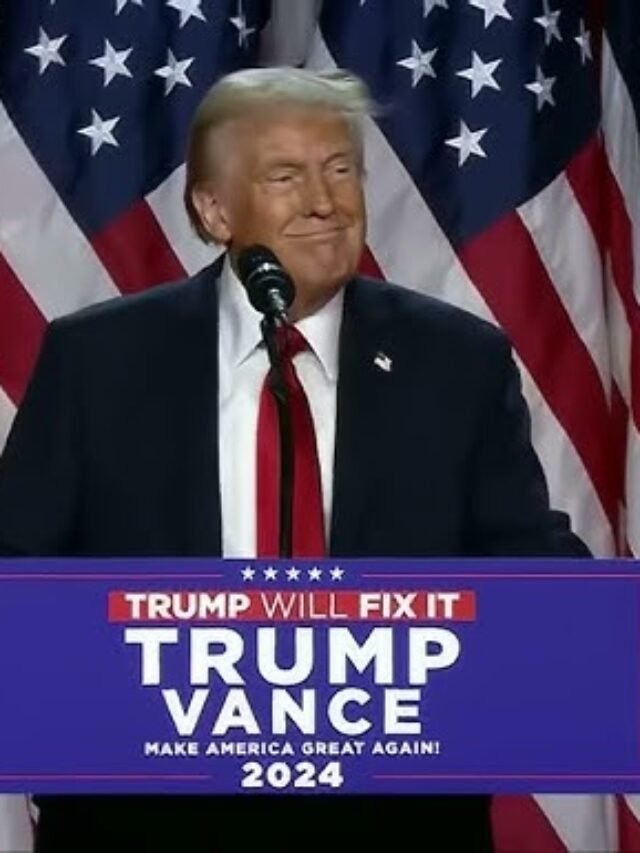Donald Trump is currently our president in the 2024 presidential race, especially because people believe in him to fight inflation. This is a little curious since Trump has for months now been pitching proposals to drastically raise consumer costs.
Trump’s very large margin on price management is important because inflation was the most frequently mentioned ‘critical issue’ in the United States in the poll.
Unfortunately for Trump, he does not have a plan that can withstand any attack regarding making Big Macs cheap again. Instead, the Republican and his advisers have crafted an economic plan that constitutes a blueprint for how to supercharge inflation.
This is not a matter of disputing interpretations of the policies’ second-order consequences, but of stating that Trump’s policies would raise prices. Instead, some of the president’s proposals would actually raise the costs of American consumers intentionally by the administration’s own design. Here is a quick primer on the likely GOP nominee’s four-point plan for making your life less affordable:
Step 1: Devalue the U.S. dollar
Since the Covid crisis, inflation has been felt by consumers all across the wealthy world in the years that have followed. Americans, though, have one advantage over their peers abroad: Their nation’s currency is low in relation to other currencies.
The US economy is growing nearly twice as fast as other major developed countries with little more inflation to show for it. However, the Federal reserve has continued to maintain America’s interest rates high. Taken together, these two realities increase demand for the dollar: International investors wish to invest their money in nations that are expanding quickly, /or those that will provide a high, safe yield on their government bonds. America is currently doing both of them. Therefore many investors in other countries are changing their local currencies to greenbacks, which has the effect of pushing up the dollar.
This means that the Americans’ paycheck is stretching a little farther because the international dollar is buying cheaper imports for them.
But Trump’s advisers are keen to alter this. Politico writes that policy advisors to the former president are ‘discussing how to depreciate the US dollar’ if he wins the second term.
The reason being for all of this is not a tough one to comprehend. However, this puts the exporters of the US at a disadvantage since their products become relativity expensive to buyers in the international market. And because Trump and his former trade representative, Robert Lighthizer, have long been interested in increasing the share of American-made goods and reducing the trade deficit, they are willing to put the interests of producers at the expense of consumers.
Lighthizer is said to want to pressure other countries to raise the value of their currencies by threatening to slap trade tariffs on their exports. Trump’s advisers are also considering options over possible methods of globally manipulating the dollar without other countries’ assistance, as per Politico.
It is possible to debate whether or not the US dollar is currently overvalued. There are many commentators on the left and right who think that America has a self-interest in maintaining and building up the nation’s industrial capabilities. And everything else equal, a strong dollar does negatively affect American manufacturing. While the manufacturing sector employs only about 8.6 percent of US workers, implying that the majority of the American populace has a prouder, quicker, and more proximate stake in cheap imports than in competitive exports.
Moreover, it is possible to assume that the Trump team’s strategies would be counterproductive because many foreign governments would respond to tariffs and dollar devaluation with the same measures while attempting to depreciate their own currencies.
Yet even if one supports Lighthizer’s priorities and proposals, an inescapable fact remains: A plan to devalue the dollar is — quite literally — a plan to impose high cost on American consumers through expensive products.
But this is not the only Trump team proposal for directly raising your household’s expenses.
Step 2: Place a 10 percent tariff on everything that comes from outside the country
In a bid to enhance the manufacturing industry in the United States, Trump and his team are planning to increase a tariff to 10 percent on all imports from other countries. In practice, this would almost certainly translate into consumers in the United States paying roughly 10 percent more for all the imported cars, electronics, toys, and other products they buy.
At the same time, US manufacturers shielded from foreign competition by tariffs, could afford to increase their prices by a good deal without losing customers. The end effect of all this would be to push up prices for consumers as much as possible.
That said, because Trump’s universal tariff would work in effect as a 10 percent sales tax on all imported goods, it would have a small dampening effect on consumers’ demand. Remove access to products and services and how will Americans be able to afford them now? In theory, when consumers start to buy less, inflation could start to decline as well.
Oh, but guess what? Trump has a full-spectrum (albeit accidental) strategy for pumping inflation’s balance sheets, which addresses this contingency.
Step 3: Pass large, borrowing-financed tax reductions
The Republican Party’s top financial goal in the year 2025 will be preserving Trump tax reforms. As it is known, many of the provisions of the former president’s 2017 tax package are to expire on December 31, the following year. Pretending to hold those polices will further commit the federal government to adding $3.3 trillion to the federal deficit over the next decade, says the CRFB.
However, Trump is not content with merely preserving the today’s rates of taxation in the United States. However, his team intends to slash the corporate rate from 21 percent down to as low as 15 percent. That would increase the deficit by $522 billion by conventional scoring, if projected by the Tax Foundation, an American right-wing policy think tank.
He also wants to get a major middle-class tax cut through, as Reuters recently noted. In particular, Trump and his advisers are thinking about cutting the federal payroll tax or lowering the marginal rate of individual income tax for the middle class. If their scale has not been defined it is hard to determine just how expensive they would be in terms of the balance sheet. Because the middle-income population is enormous in America, any significant cut in the taxation level would entail a highly costly operation on the country’s budget.
It would be quite natural to think that a middle-class tax cut would help make life cheaper for Americans at least in the first instance. This would be the case if such a policy was associated with no likelihood of reigniting inflation, but as it would, it would come with exactly the same danger.
If you pump an extra few hundred billion dollars into the pockets of Americans after taxes, they will be able to ramp up consumption far more than previous estimates indicated. And if the economy’s ability to generate goods and services does not rise at least as fast, then demand outpaces supply and consumers have to pay higher prices.
In theory, Republicans could pass non-inflationary, multitrillion-dollar tax cuts without inflation, but only if the spending cuts are used to balance the fiscal stimuli.
The plan of continuing the current tax rates set in 2017 and the new corporate tax rate of 15% would mean the loss of $3.9 trillion. Adding a huge middle-class tax cut to this total could easily push that sum total past $6 trillion. During both the Trump and the George W. Bush administration, congressional Republicans simply did not have the appetite to implement cuts anywhere close to that number.
Most crucially, to fully offset the inflationary effects of the tax cuts in 2025 and 2026, spending must be cut right now, not in the future. Republicans have no inclination to reduce Medicare and social security for the current beneficiaries. To get $6 trillion worth of spending reductions without even touching entitlements would mean slashing all sorts of other beloved social programs.
The easiest path would therefore be to achieve deficit financing for the most part of Trump’s tax reductions. This would probably result in faster price increases and additional increases in interest rates from the Federal Reserve.
Of course, if Republicans could somehow magically increase the productive capacity of the US economy in the short term then their tax cuts wouldn’t be inflationary and the average person would be better off (at least until they realized that they were paying the price for the long-term loss of funding for Medicare and Social Security).
But Trump’s team has no intention of doing so. The last prong in their inflation friendly strategy is to suddenly contract the supply side of the American economy.
Step 4: Reduce the size of the American labor force
As the New York Times noted back in November, Trump and his former senior adviser, Stephen Miller, are reportedly preparing to deport millions of unlawfully present immigrants during the second Trump’s term regardless of the Congress.
At the moment, due process rights limit the government’s power to deport undocumented immigrants in large numbers. However, Miller and Trump are convinced that they can reduce those rights using existing authorities of the executive branch. They plan to change trial deportation proceedings for all illegals who entered the country less than 2 years ago to expedited removal. In other words, such immigrants should be expelled from the country without any possibility of presenting their case at a legal proceeding.
Current laws do make it harder for the US to summarily deport longtime residents, but Trump’s team believes they can find a way to make millions of them leave anyway. First, they would step up attacks on workplaces and other regions they think hide the undocumented immigrants. Then, they would sentence the captured immigrants to spend the rest of their lives in federal detention centers. These detainees would still have the opportunity to seek legal redress against their removal but they would have to do that while incarcerated for that often several years long process. Miller says that most will rather opt to exit the country than endure de facto imprisonment.
As far as I am concerned, there are sound ethical grounds to reject such policies. However, even if someone does not have one drop of sympathy for these, their fellow Americans, they have reasons rooted in their self-interest not to support mass deportation.
As scholars at the Brookings Institution noted last fall, the upsurge in immigration since the pandemic is one major reason why the US managed to bring inflation down without suffering a recession: Immigrants enhanced the productivity of workers in the economy so that the supply side was able to match the demand side with consumers.
On the other hand, if America were to expel all the undocumented workers tomorrow, there would be severe scarcity of labor and virtually every sector of the economy from construction to farming to care giving, would be severely hit and prices would skyrocket.
Put all of this together and you have a recipe for making the inflation rate 9 percent again: Cut the dollar’s purchasing power, shield US producers against imports, pump up demand with tax rate reductions, and then crush supply through deportations, and prices will skyrocket.
Sadly, it seems that Americans have not given much thought to Trump’s proposals or their economic implications, and this may be because both have not been heavily covered in the media. If that does not change between now and November, the country could pay the price.
















